You know that feeling. The 3 p.m. slump that starts at 10 a.m. The endless scrolling instead of sleeping. That low-grade dread on Sunday nights. It’s more than stress—it’s like your emotional battery has been unplugged, and no amount of coffee or “self-care” memes can recharge it. Burnout isn’t a badge of honor; it’s your mind and body screaming for relief. And here’s the cruel twist: When you’re drowning in exhaustion, the thought of commuting to a therapist’s office can feel like climbing Everest. But what if recovery met you exactly where you are? Let’s explore how telehealth for burnout is rewriting the burnout recovery playbook.
What Burnout Really Does to Your Brain (It’s Not “Just Stress”)
Burnout isn’t laziness or a temporary rough patch. The World Health Organization classifies it as an occupational phenomenon characterized by:
- Emotional exhaustion: Feeling perpetually drained
- Cynicism: Detachment from work or relationships
- Reduced efficacy: Plummeting confidence in your abilities
Your brain under chronic burnout isn’t just tired—it’s rewiring itself. Studies show prolonged stress shrinks the prefrontal cortex (your decision-making center) and amplifies the amygdala (your fear hub). This neural shift explains why burned-out people often feel trapped, indecisive, or emotionally raw.
The Traditional Burnout Recovery Trap
Imagine finally admitting you need help, only to face:
- Scheduling nightmares: Juggling therapy around meetings or childcare
- Commute guilt: Adding 90 minutes of transit to your packed day
- Stigma anxiety: Bumping into colleagues in a waiting room
- Access deserts: Living in areas with no specialists (over 150 million Americans reside in mental health professional shortage areas)
No wonder 60% of burned-out employees don’t seek care. The system was built for the well—not the exhausted.
Telehealth: Your Burnout Recovery Game Changer
Here’s how virtual care dismantles those barriers:
✅ Access That Adapts to Your Life
- No-commute therapy: Sessions from your couch, office, or parked car
- Broader specialist access: Connect with burnout experts regardless of geography
- Time-sensitive support: Get help during crisis moments (e.g., panic attacks between meetings)
“Telehealth removes the ‘second job’ of accessing care. When you’re depleted, that friction reduction is life-changing.”
✅ Creating Your Safe Space (Literally)
Physical environments impact emotional vulnerability. Telehealth lets you:
- Control lighting, sound, and privacy
- Use comfort objects (a weighted blanket, pet nearby)
- Avoid triggering spaces (clinical offices, fluorescent lighting)
Research in JMIR Mental Health confirms patients report higher comfort levels in virtual sessions versus clinical settings for stress-related conditions.
✅ Consistency = Recovery Momentum
Burnout healing isn’t linear—it requires steady support. Telehealth enables:
- Session persistence: No cancellations due to mild illness or transport issues
- Between-session tools: Secure messaging for quick guidance, digital mood tracking
- Ritual building: Same space → same headspace (train your brain to shift into “recovery mode”)
3 Science-Backed Telehealth Tactics for Burnout
Burnout-specific therapies thrive virtually when tailored right:
- CBT-I for Sleep Restoration
Chronic burnout wrecks sleep. Therapists use virtual platforms to:- Share sleep hygiene visuals
- Screen-share sleep logs
- Guide real-time relaxation drills (NIH studies show CBT-I effectiveness via telehealth)
- Boundary-Building Role Plays
Practice saying “no” or delegating via:- Therapist-led simulated conversations
- Digital worksheets for work email templates
- Video feedback on body language cues
- Energy Audit Workshops
Identify energy drains using:- Screen-shared visual timelines of your week
- Collaborative digital “energy budget” planners
- Symptom tracking apps synced to your therapist
But Does It Actually Work for Burnout?
Let’s cut through the hype. Meta-analyses of 17 studies (published in Clinical Psychology Review) found:
- Equivalent outcomes for telehealth vs. in-person therapy for anxiety/depression (common burnout comorbidities)
- Higher retention rates among exhausted patients (28% less dropout)
- Faster symptom reduction in 60% of participants due to consistent access
Your Telehealth Readiness Checklist
Maximize virtual sessions with these prep steps:
- Tech test: Run internet speed/audio checks pre-session
- Privacy hacks: Noise-canceling headphones, “do not disturb” signs
- Transition ritual: 5 minutes of deep breathing before clicking “join”
- Goal focus: Jot down 1-2 key issues to tackle (prevents rambling)
When Telehealth Isn’t the Right Fit (And That’s Okay)
Virtual care shines for mild-moderate burnout but may need supplementation if you experience:
- Active suicidal ideation
- Severe dissociation
- Complex trauma triggers
(Always consult a professional about your individual needs)
Breakthrough Is a Click Away
Burnout recovery isn’t about pushing harder—it’s about support that meets you in your exhaustion. Telehealth transforms access from a hurdle into a healing superpower: consistent, judgment-free, and tailored to your depleted state.
Ready to trade burnout for breakthrough? Procare Behavioral & Mental Health Care PLLC specializes in evidence-based telehealth for burnout recovery. Explore their approach at https://procarebehavioralhealthpllc.com/ and take the first step toward reclaiming your energy—without leaving your couch.



